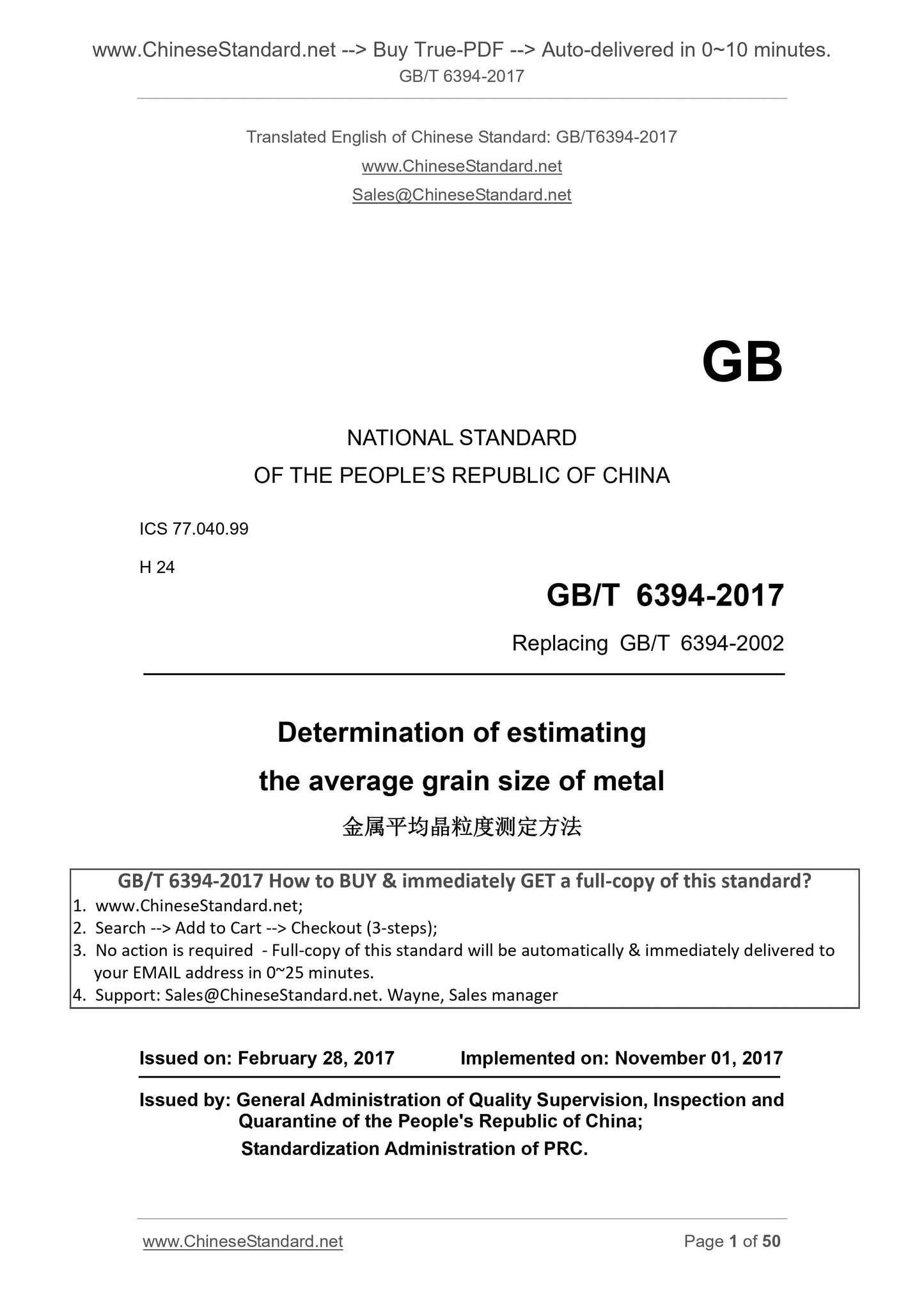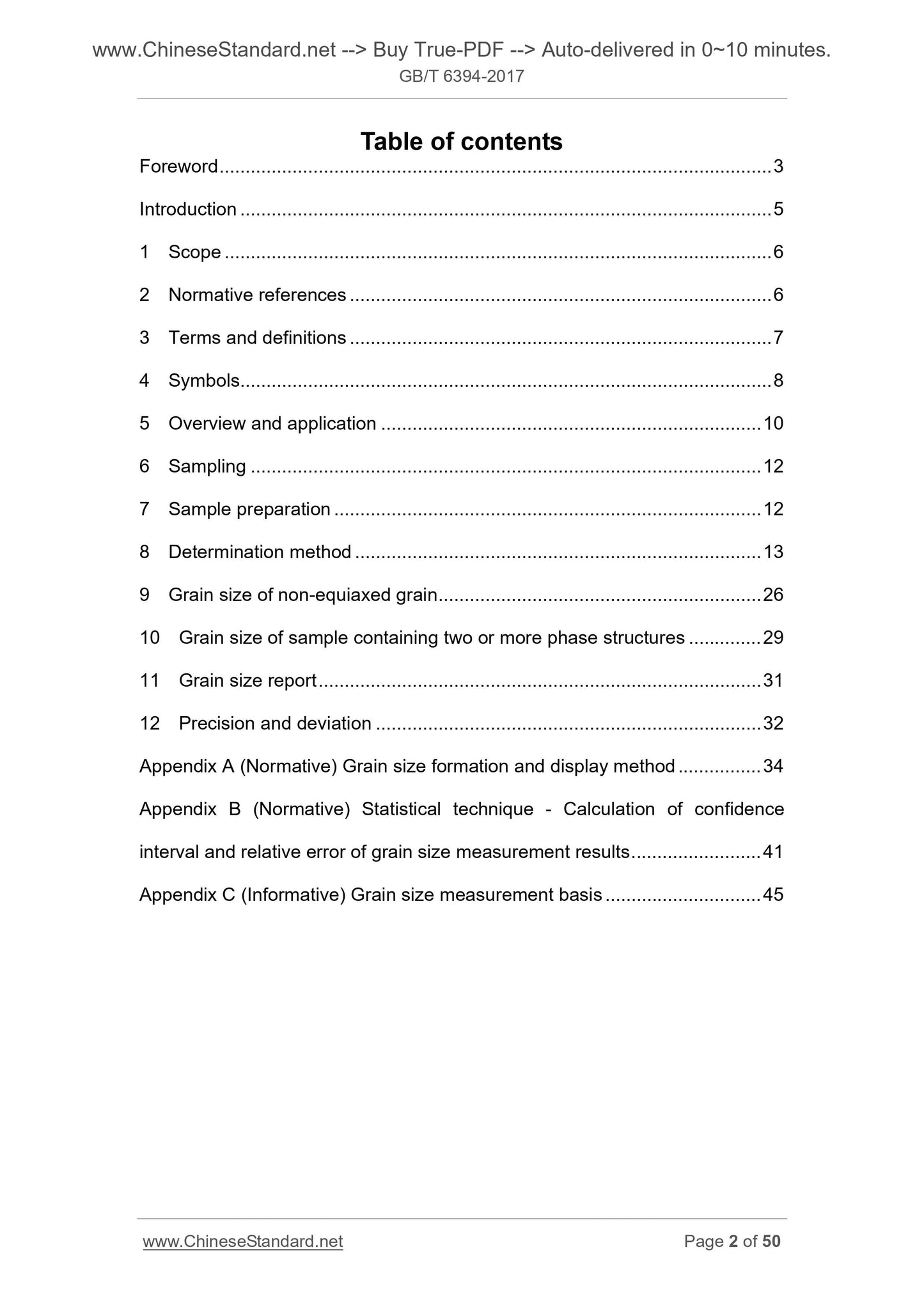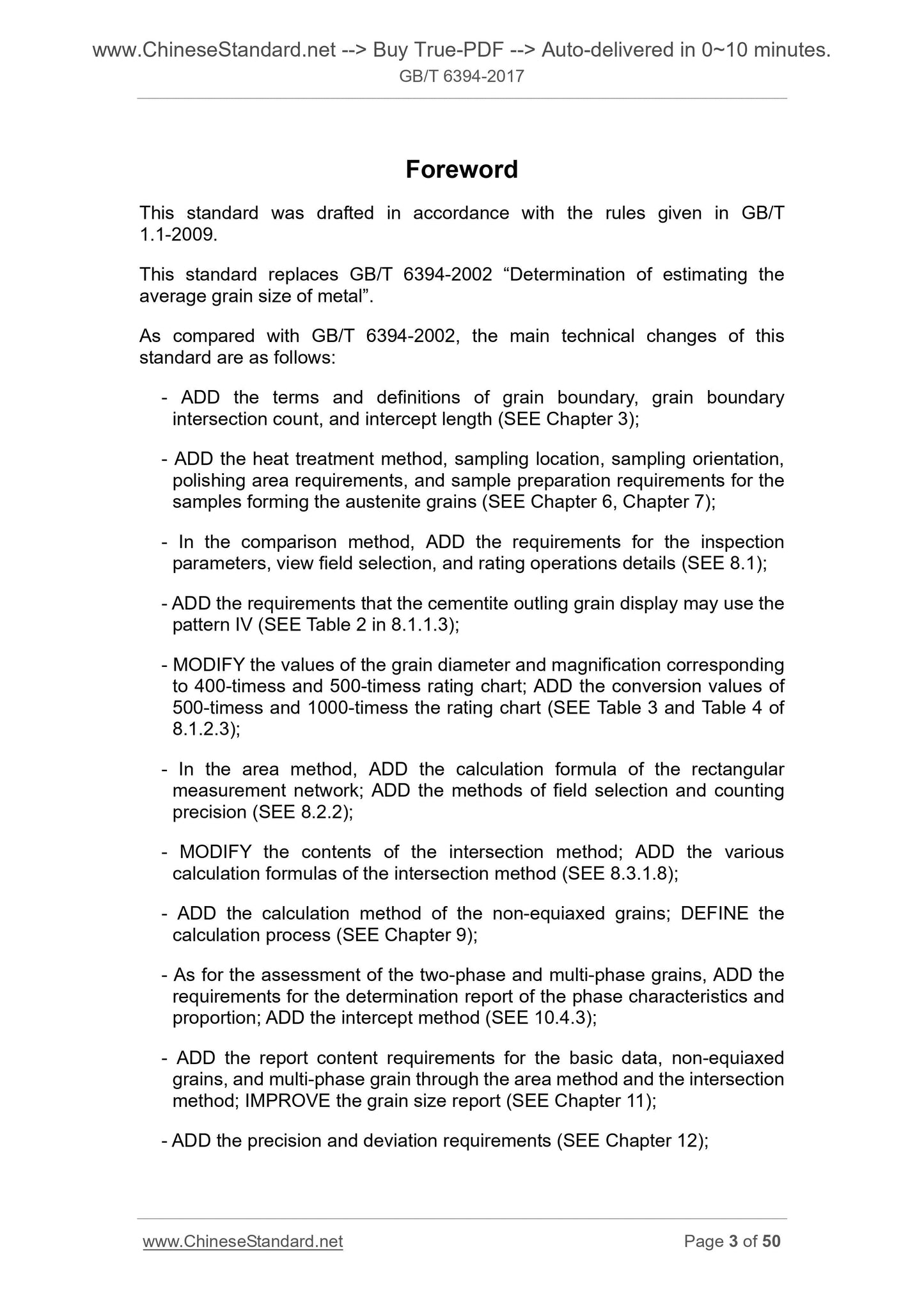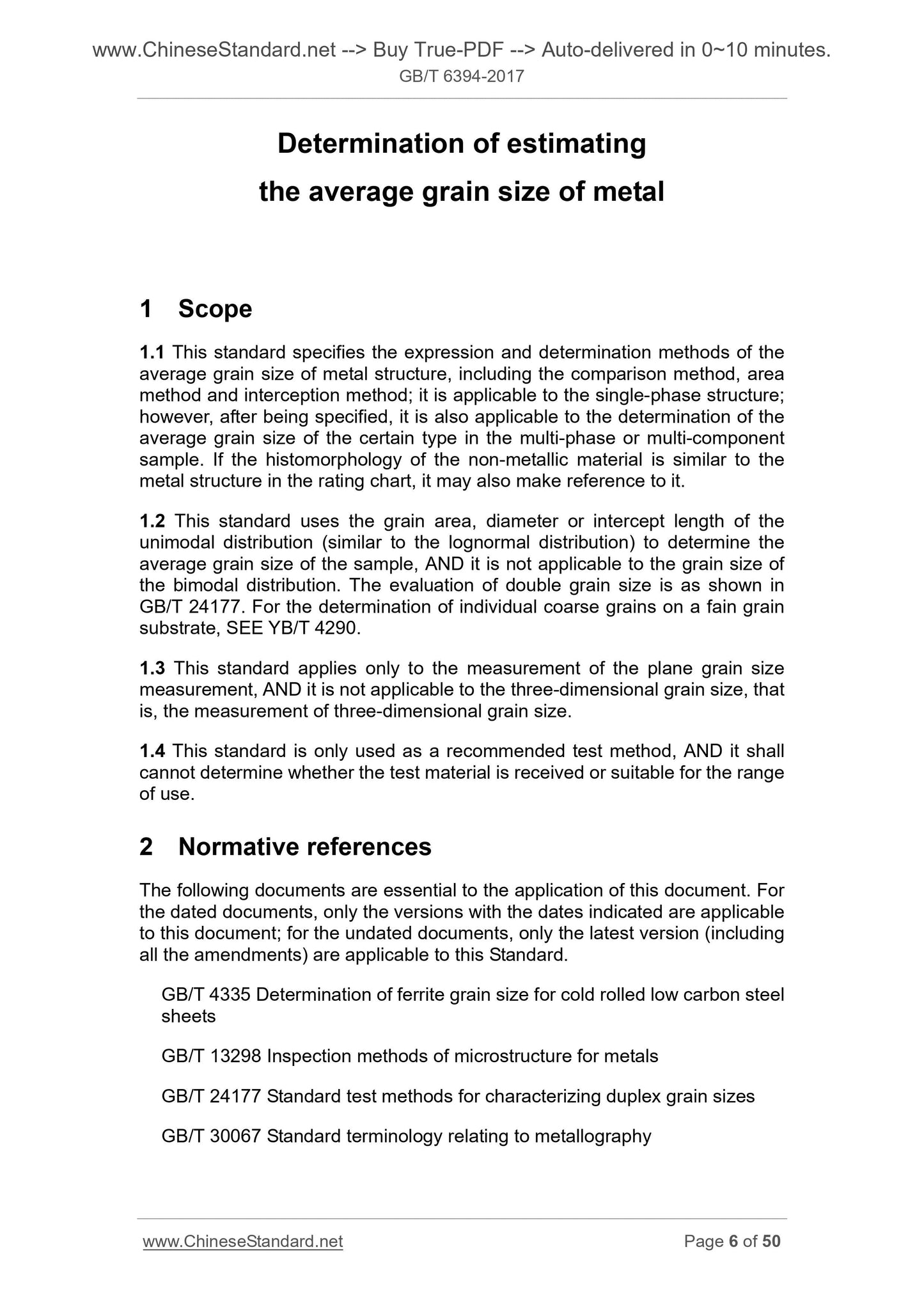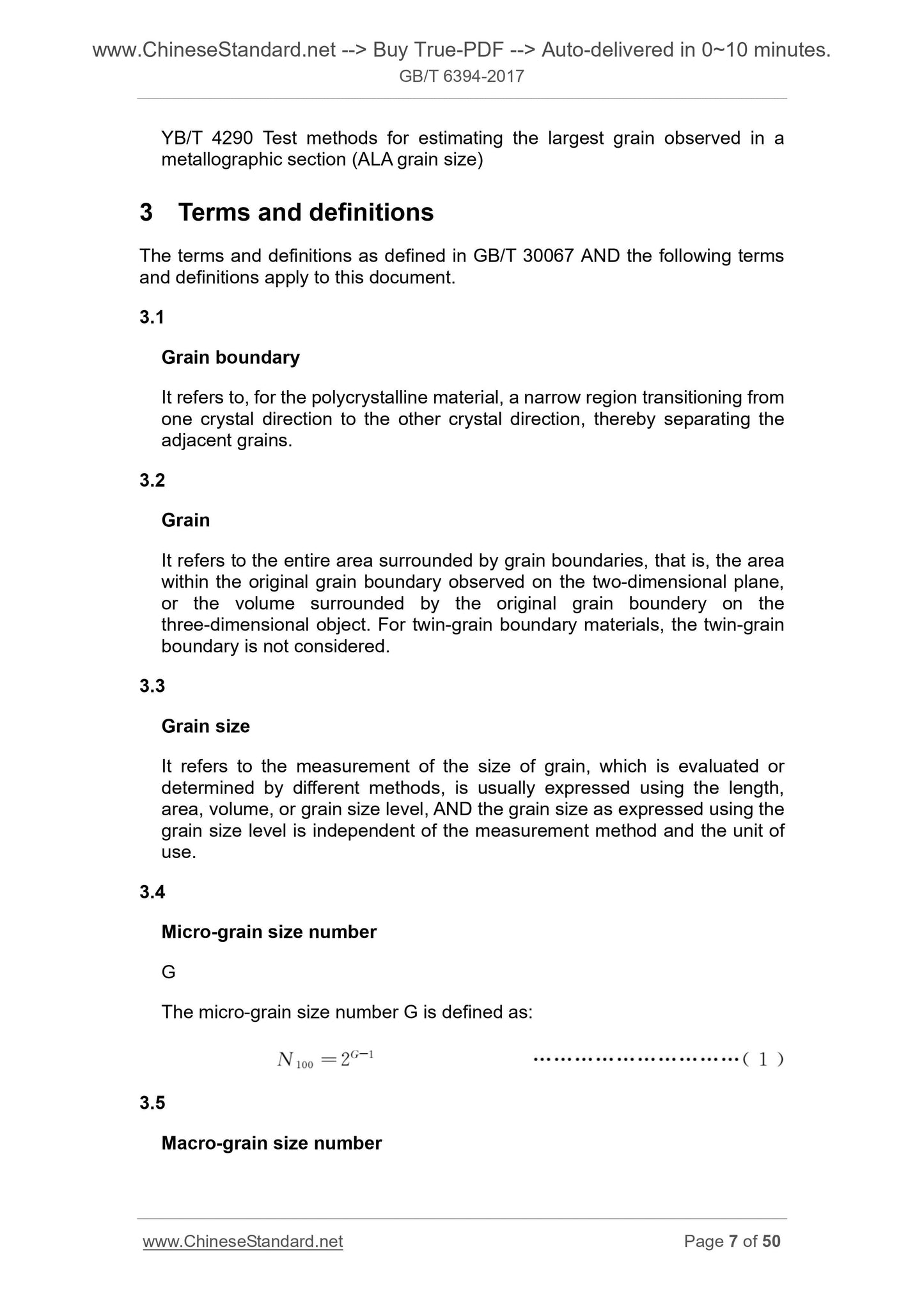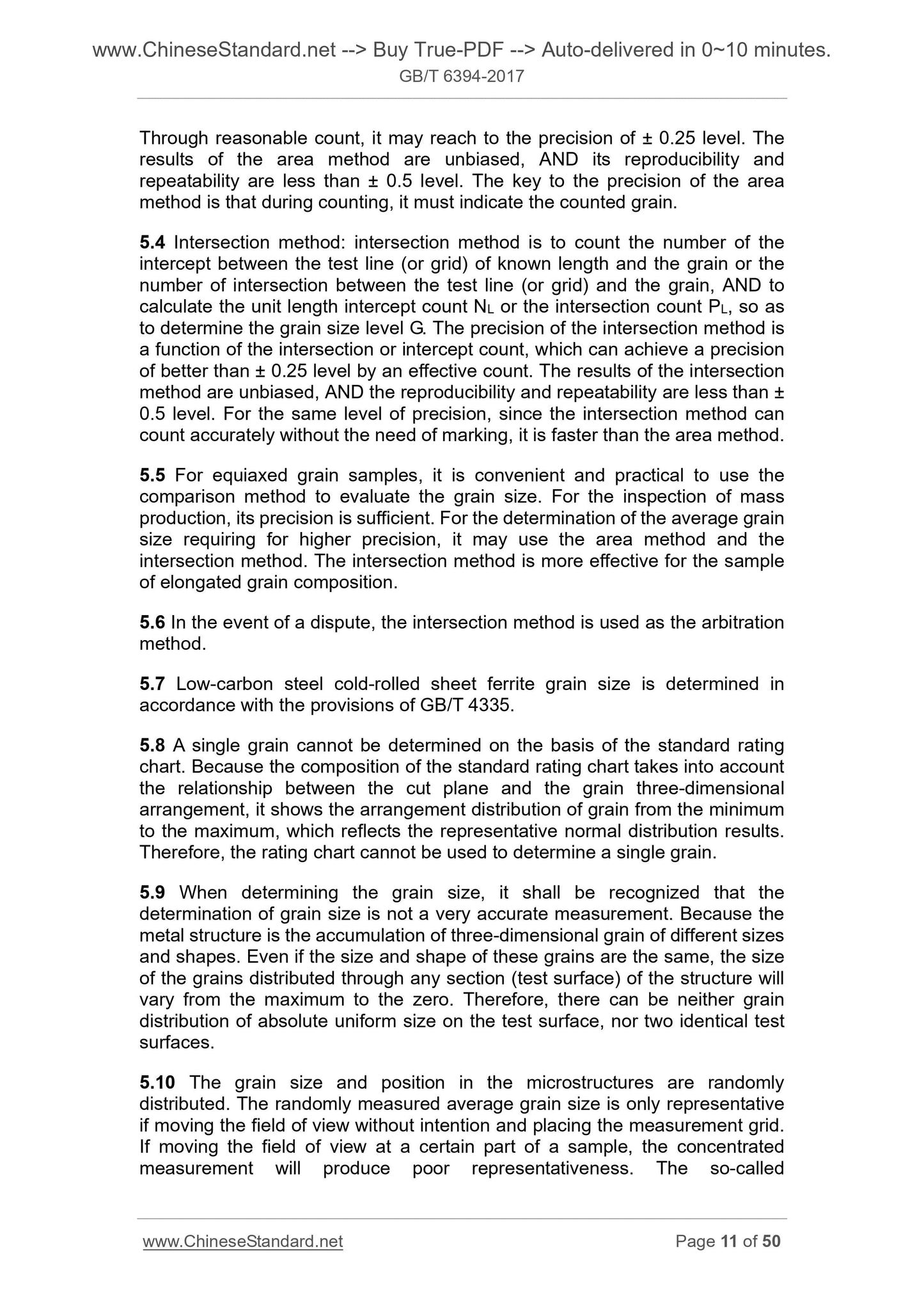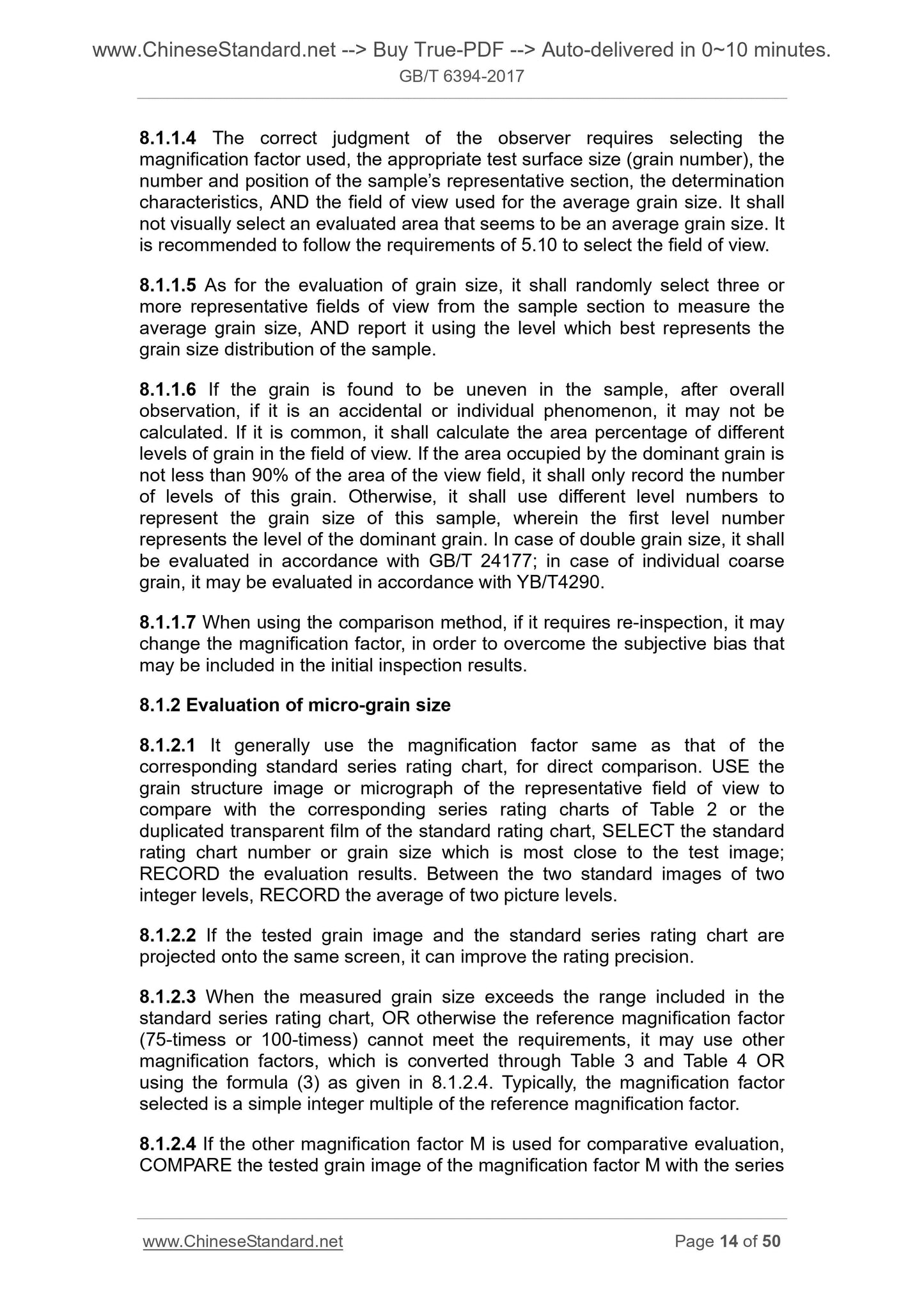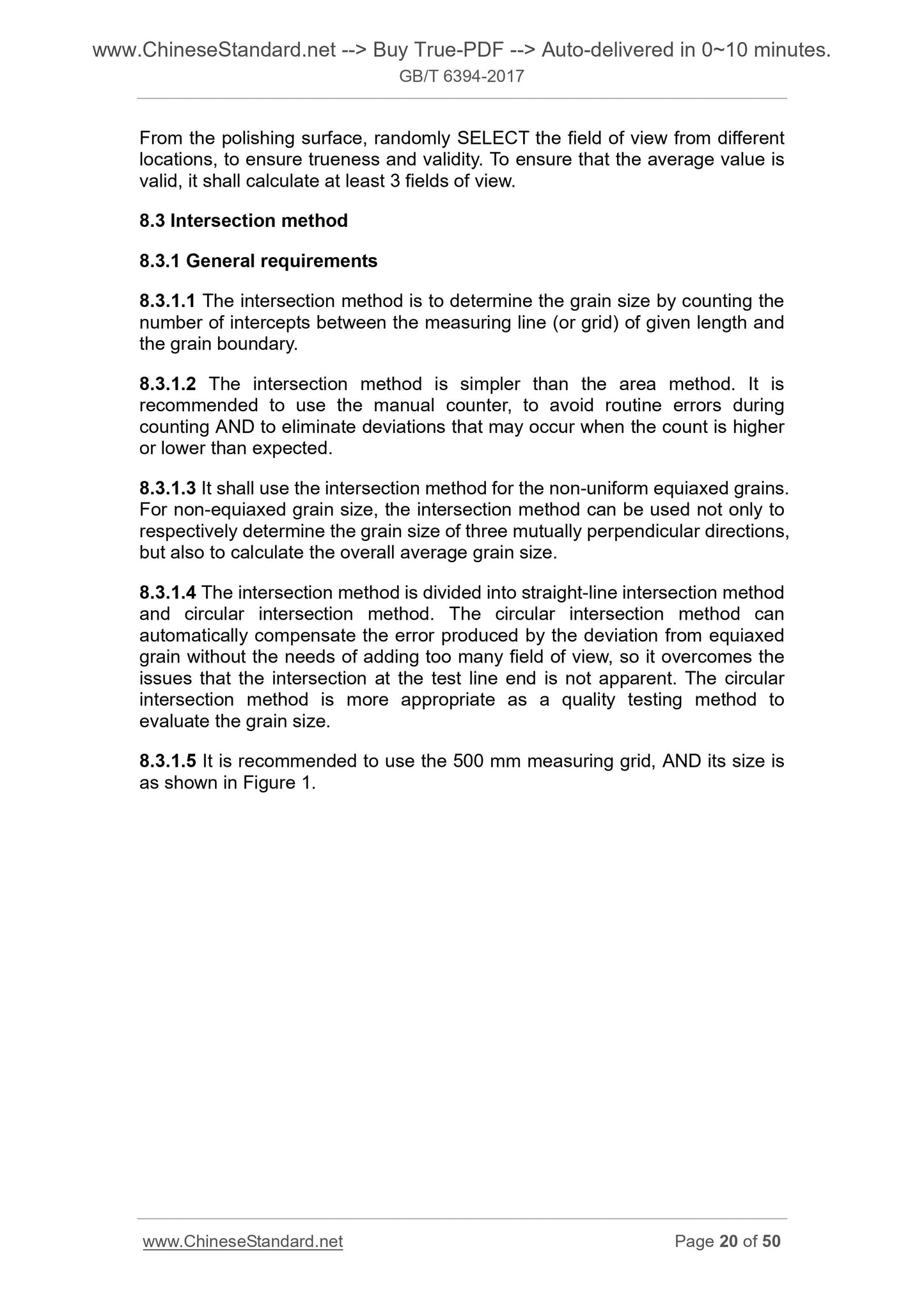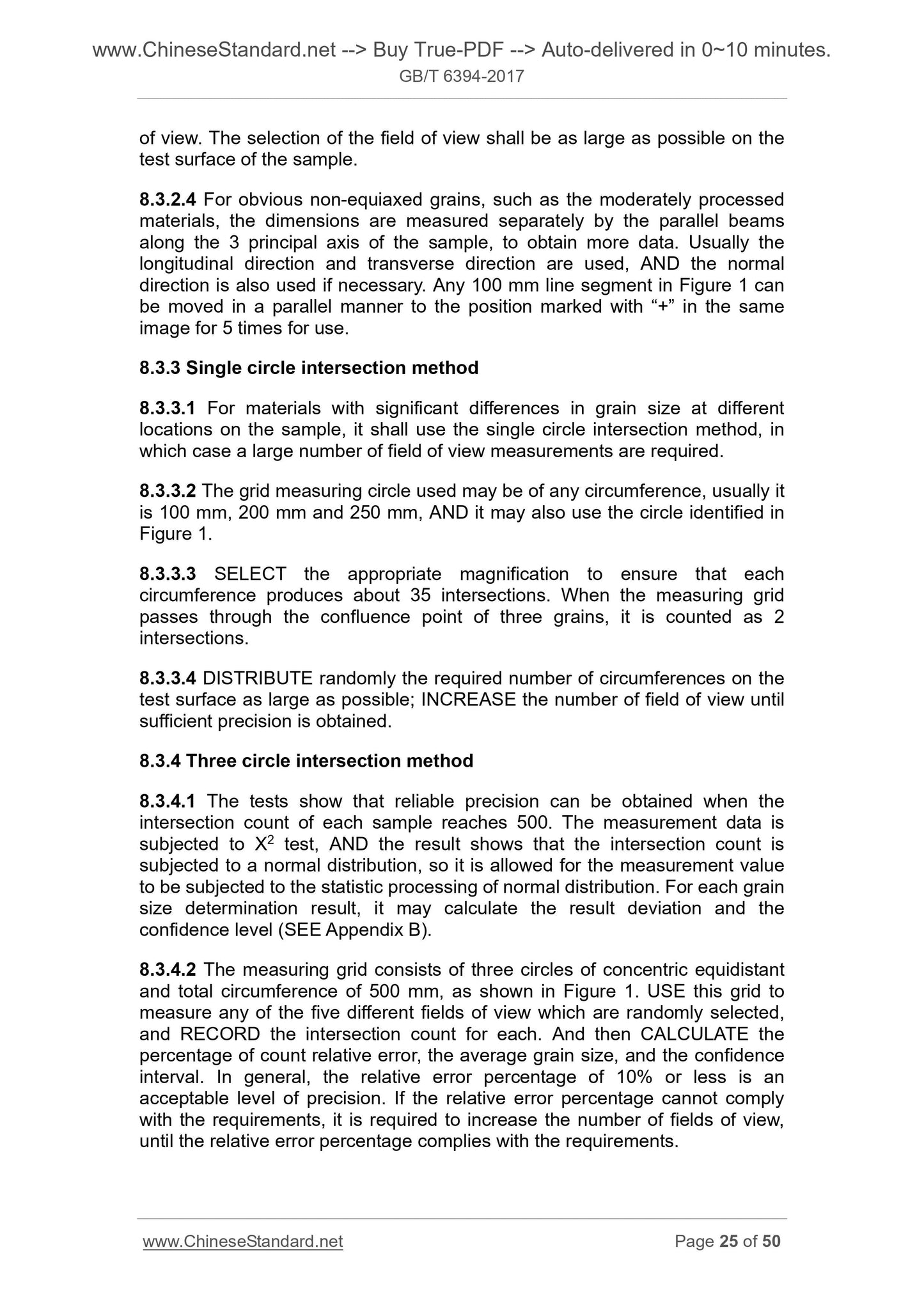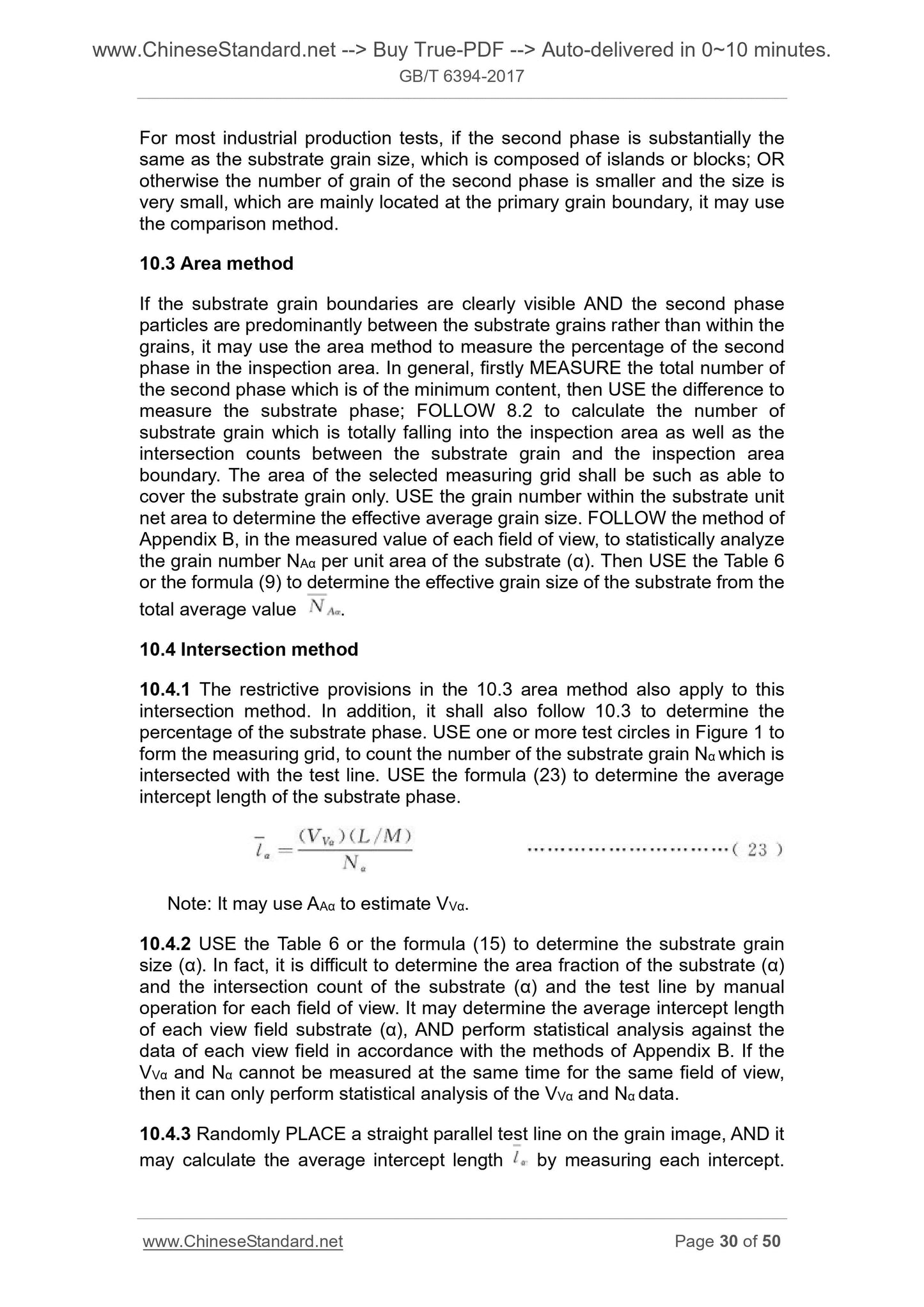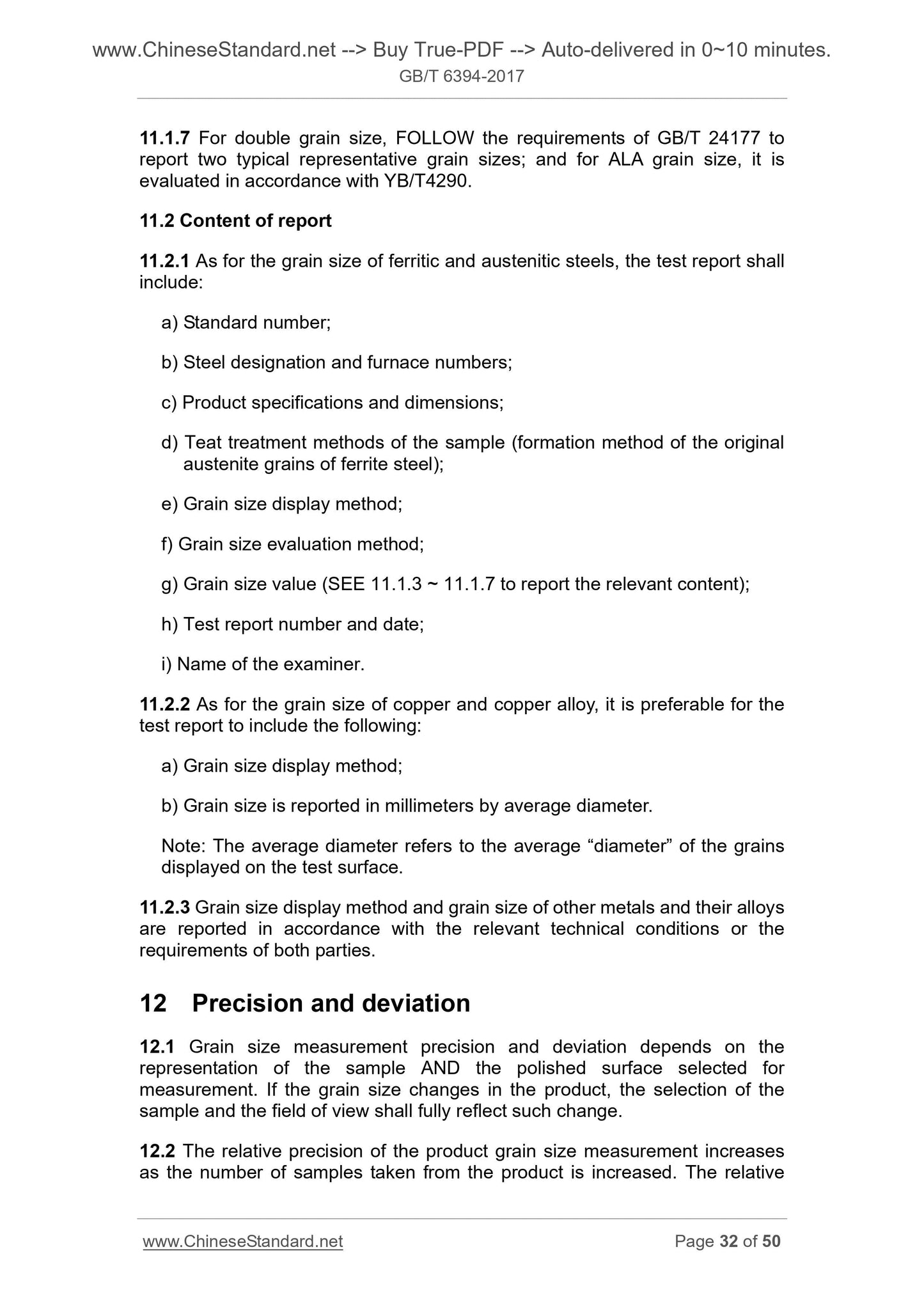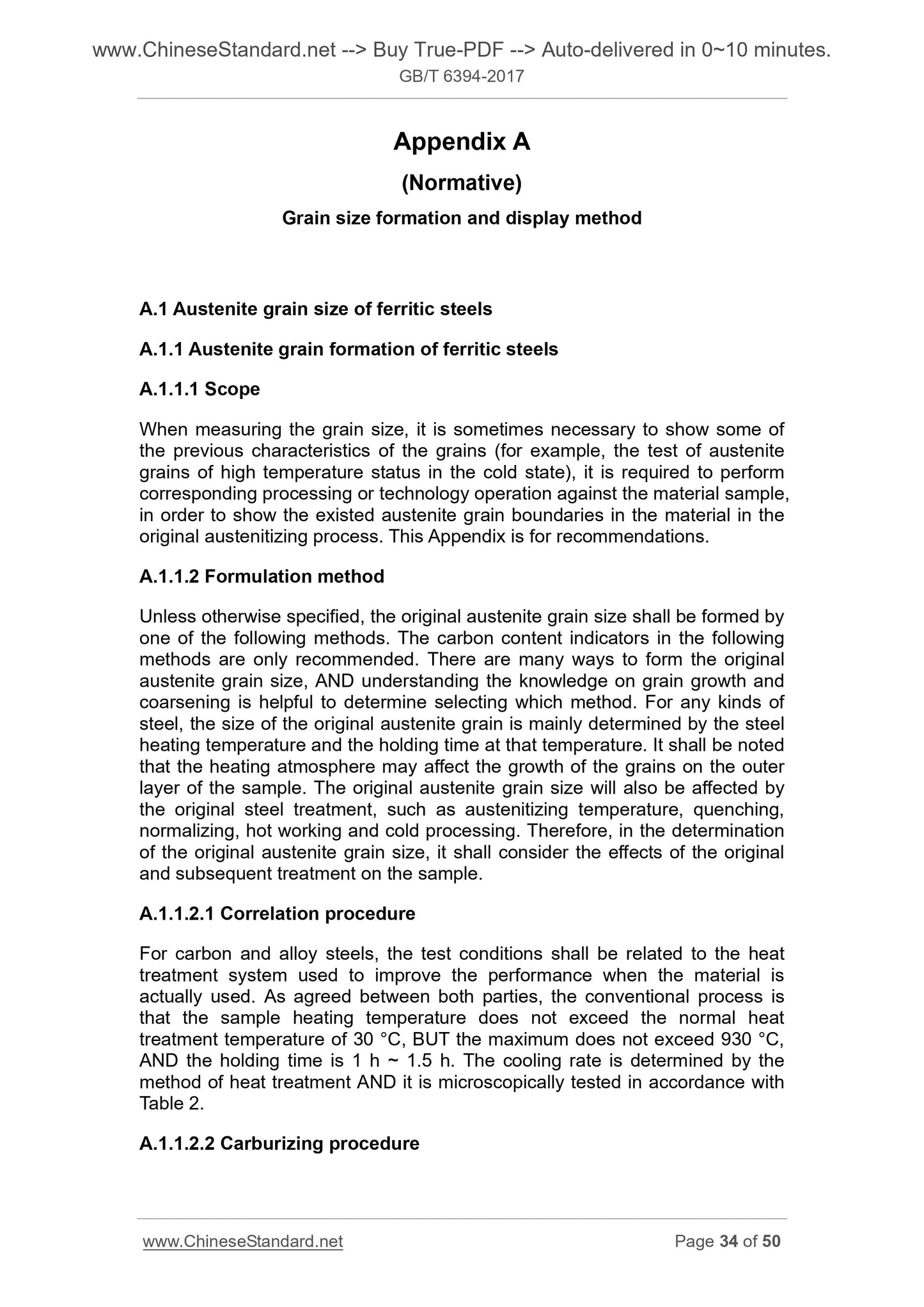1
/
of
12
www.ChineseStandard.us -- Field Test Asia Pte. Ltd.
GB/T 6394-2017 English PDF (GB/T6394-2017)
GB/T 6394-2017 English PDF (GB/T6394-2017)
Regular price
$145.00
Regular price
Sale price
$145.00
Unit price
/
per
Shipping calculated at checkout.
Couldn't load pickup availability
GB/T 6394-2017: Determination of estimating the average grain size of metal
Delivery: 9 seconds. Download (and Email) true-PDF + Invoice.Get Quotation: Click GB/T 6394-2017 (Self-service in 1-minute)
Newer / historical versions: GB/T 6394-2017
Preview True-PDF
Scope
1.1 This standard specifies the expression and determination methods of theaverage grain size of metal structure, including the comparison method, area
method and interception method; it is applicable to the single-phase structure;
however, after being specified, it is also applicable to the determination of the
average grain size of the certain type in the multi-phase or multi-component
sample. If the histomorphology of the non-metallic material is similar to the
metal structure in the rating chart, it may also make reference to it.
1.2 This standard uses the grain area, diameter or intercept length of the
unimodal distribution (similar to the lognormal distribution) to determine the
average grain size of the sample, AND it is not applicable to the grain size of
the bimodal distribution. The evaluation of double grain size is as shown in
GB/T 24177.For the determination of individual coarse grains on a fain grain
substrate, SEE YB/T 4290.
1.3 This standard applies only to the measurement of the plane grain size
measurement, AND it is not applicable to the three-dimensional grain size, that
is, the measurement of three-dimensional grain size.
1.4 This standard is only used as a recommended test method, AND it shall
cannot determine whether the test material is received or suitable for the range
of use.
Basic Data
| Standard ID | GB/T 6394-2017 (GB/T6394-2017) |
| Description (Translated English) | Determination of estimating the average grain size of metal |
| Sector / Industry | National Standard (Recommended) |
| Classification of Chinese Standard | H24 |
| Classification of International Standard | 77.040.99 |
| Word Count Estimation | 33,369 |
| Date of Issue | 2017-02-28 |
| Date of Implementation | 2017-11-01 |
| Older Standard (superseded by this standard) | GB/T 6394-2002 |
| Quoted Standard | GB/T 4335; GB/T 13298; GB/T 24177; GB/T 30067; YB/T 4290 |
| Regulation (derived from) | National Standard Announcement No. 4 of 2017 |
| Issuing agency(ies) | General Administration of Quality Supervision, Inspection and Quarantine of the People's Republic of China, Standardization Administration of the People's Republic of China |
| Summary | This standard specifies the representation and determination of the average grain size of the metal structure, including the comparative method, the area method and the intercept method, and is applicable to the single phase structure, but it is also applicable to the multi-phase or multi-component sample Determination of the average grain size of a particular type. Non-metallic materials such as histomorphology and comparative rating chart similar to the metal structure can also refer to the use. This standard uses the singlet distribution of grain size, diameter or stub length (approximately logarithmic normal distribution) to determine the average grain size of the sample and does not apply to the grain size of the bimodal distribution. The evaluation of double grain size is given in GB/T 24177. For the determination of individual very coarse grains on a fine grain substrate, see YB/T 4290. This standard applies only to the plane grain size measurement, does not apply to the three-dimensional grain size, that is, three-dimensional grain |
Share
